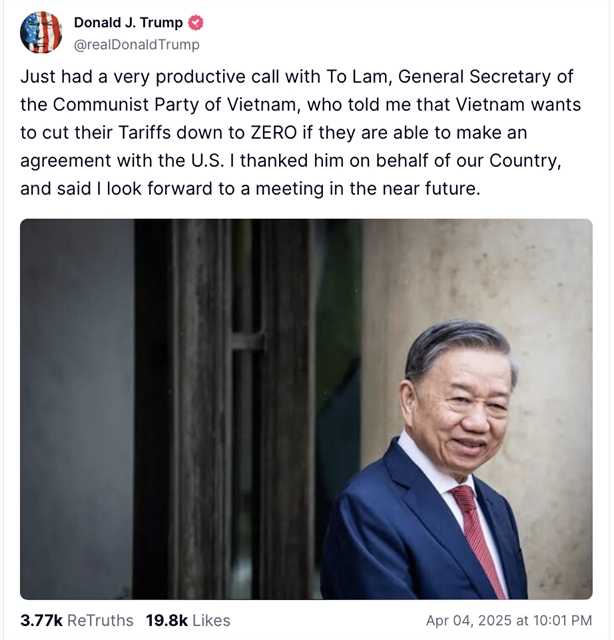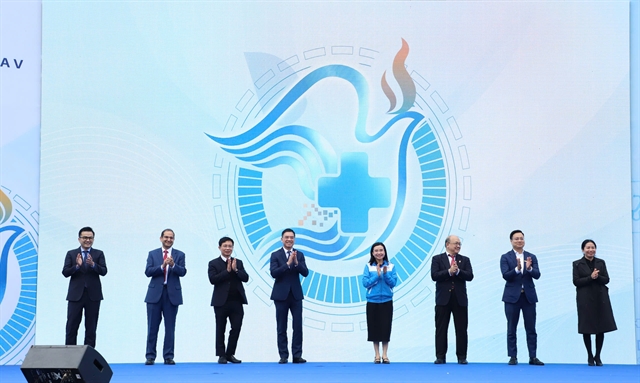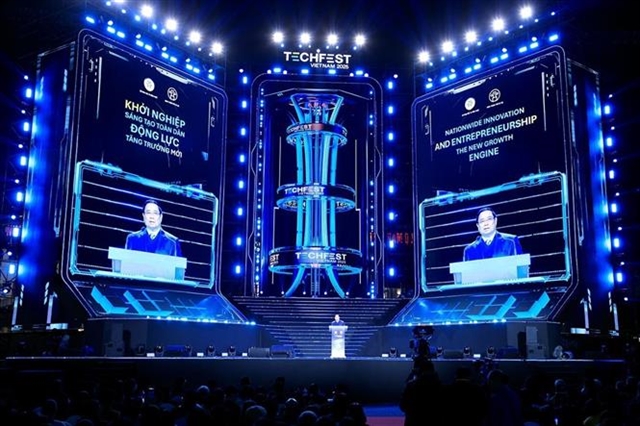 Opinion
Opinion

 |
| PM Phạm Minh Chính presides over the Government’s monthly meeting and its online conference with local authorities on Sunday. — VNA/VNS Photo |
HÀ NỘI — Prime Minister Phạm Minh Chính has stressed that the US’s new tariff policies present an opportunity for Việt Nam to restructure its economy, markets, production and exports, calling for calm, proactive, creative, flexible, timely, and effective responses to ensure stability as well as rapid and sustainable development.
At the Government’s monthly meeting and online conference with local authorities on Sunday, PM Chính highlighted important areas with great performances in the first quarter and noted that multiple international organisations and experts have praised Việt Nam’s economic results and prospects, with the World Bank forecasting Việt Nam’s economic growth at 6.8 per cent in 2025 and the UN 6.6 per cent - the highest in Southeast Asia.
PM Chính also pointed out several challenges to the economy, including pressure on macroeconomic management and inflation control, particularly with interest rates and exchange rates remaining high amid strong global fluctuations and increased risks from the sudden US reciprocal tariffs. He said that while first-quarter GDP growth was higher than initial projections, it fell short of adjusted scenarios, and public investment disbursement was lower compared to the same period last year.
Drawing on lessons learned, the Government leader underscored that greater difficulties and challenges require stronger determination to move forward, demonstrating the resilience, core values, wisdom, and culture of the Vietnamese people. He insisted on never retreating in the face of adversity and remaining steadfast in pursuing established goals with greater determination and effort, and more decisive, flexible, and effective action.
PM Chính emphasised that Việt Nam will not change its target of achieving economic growth of 8 per cent or higher this year, while simultaneously maintaining macroeconomic stability, ensuring social welfare, and improving people's livelihoods.
Export is an important growth motive, but not the only one. The US is a major export market, but not the sole one, he emphasised, urging officials to consider the situation within the context of Việt Nam's overall trade relations with the world, especially given that Việt Nam has signed 17 free trade agreements with various countries. He particularly laid stress on the need to promote the great national unity as well as enhance the solidarity within each agency, as well as the whole political system and people in carrying out tasks.
To adapt to the US tariff situation, ministries, sectors, and localities were ordered to immediately remove difficulties and obstacles, creating favourable conditions for foreign enterprises in general and US enterprises in particular. Officials should proactively work with associations and large businesses, providing appropriate and effective support policies while promptly and transparently responding to US concerns, especially regarding intellectual property and combating fraudulent origins of goods.
He directed media agencies like the Việt Nam Television, the Voice of Việt Nam, and the Vietnam News Agency to provide timely, appropriate, and comprehensive information that clearly demonstrates the Party and State's direction to support the people, protect the legitimate rights and interests of businesses and investors, as well as safeguard national interests.
PM Chính called for continued institutional reforms, streamlining organisational structures, and accelerating administrative reform and digital transformation. He set targets for 2025, including reducing administrative processing time, cutting business costs, and eliminating business conditions, all by at least 30 per cent, and ensuring that 100 per cent of administrative procedures within provincial jurisdictions are independent of administrative boundaries.
To stimulate growth, he requested efforts to renew traditional growth drivers while developing new engines. This includes accelerating public investment disbursement, building plans to promote harmonious and sustainable trade with the US, China, and other major partners, effectively capitalising on existing free trade agreements while pursuing new ones, and diversifying markets, supply chains, and products. Special attention should be given to expanding into new export markets such as the Middle East, Central Asia, Eastern Europe, Halal markets, Latin America, and Africa.
Additionally, to maintain macroeconomic stability and control inflation, he asked the State Bank of Vietnam to implement proactive, flexible monetary policies in coordination with focused fiscal expansion. He emphasised reasonable credit growth, focusing on priority sectors, growth drivers, agricultural exports, and national priority projects.
The Ministry of Finance was tasked with urgently developing growth scenarios for the remaining quarters of 2025, finalising draft decrees on global minimum tax implementation, VAT reduction, and private economic development. The PM also stressed the importance of strengthening revenue management, especially from e-commerce and food services, while saving regular expenditures for development investment.
Meanwhile, he asked the Ministry of Construction to accelerate project progress for the completion of 3,000km of expressways in 2025 and substantially complete the first phase of the Long Thành Airport project. He also directed the preparation for inaugurating and launching about 50 major projects to commemorate the 50th anniversary of the liberation of the south and national reunification.
The economy showed robust performance in the first quarter of 2025, with the macro-economy kept basically stable, inflation under control, growth promoted, and major economic balances ensured. GDP growth reached 6.85 per cent year-on-year, exceeding the target set in the Government’s Resolution No 01/NQ-CP and representing the fastest pace since 2020. This places Việt Nam among the world's fastest-growing economies.
Other economic indicators were equally encouraging, with the consumer price index (CPI) rising by 3.13 per cent year-on-year, state budget revenue reaching 36.7 per cent of the annual target (up 29.3 per cent from the same period last year), and foreign trade rising by 13.7 per cent with a trade surplus of some US$3.16 billion.
The registered foreign direct investment (FDI) approximated $11 billion, a 34.7 per cent increase compared to the same period last year, while the disbursed FDI capital approached $5 billion, up 7.2 per cent. — VNS




